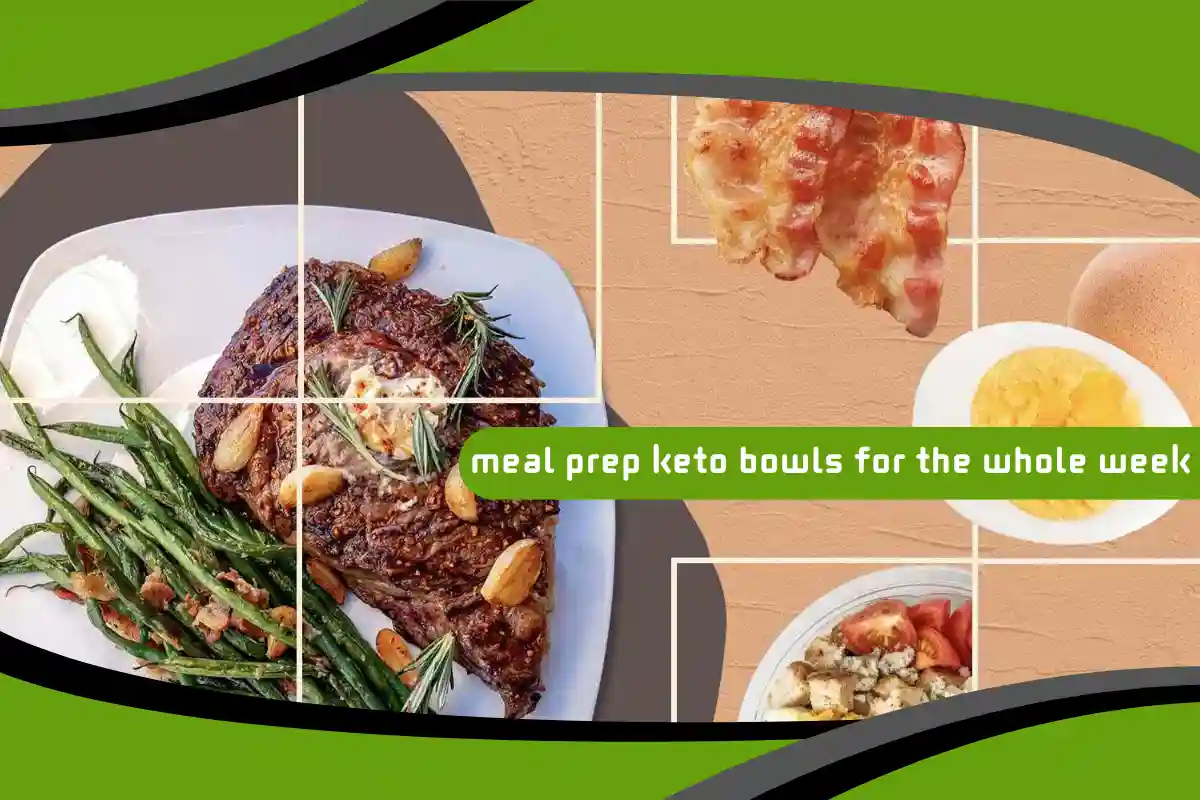Maintaining a ketogenic lifestyle requires more than just avoiding carbs—it demands strategy, planning, and a thoughtful approach to nutrition. One of the most effective ways to stay on track throughout the week is by preparing keto bowls in advance. These customizable, nutrient-dense meals combine convenience with balanced macronutrients, helping you save time, reduce decision fatigue, and remain consistent with your goals. Whether you’re working long hours, managing a family, or just prefer grab-and-go meals, keto bowls are a smart solution that fits seamlessly into any lifestyle.

Understanding the Concept of Keto Bowls
Keto bowls are balanced, low-carb meals typically made up of a protein source, healthy fats, and non-starchy vegetables, all assembled in one container. Their modular nature allows for endless variety, making them ideal for meal prep. They offer flexibility, making it easier to meet macro goals without repetitive meals or boredom.
Why Meal Prep Makes Keto Easier
Meal prepping eliminates the daily stress of deciding what to eat. By preparing keto bowls in advance, you ensure that every meal is aligned with your nutritional targets. This structure helps you avoid last-minute carb-heavy temptations and supports consistent ketosis throughout the week.
Setting Up a Keto Meal Prep Routine
Creating an effective routine begins with planning. Choose recipes, shop for ingredients, allocate prep time, and designate storage containers. Batch cooking your proteins and chopping vegetables ahead of time streamlines the process and minimizes kitchen time during busy weekdays.
Choosing the Right Proteins
The foundation of any keto bowl is a solid protein source. Opt for nutrient-dense, high-fat options like grilled chicken thighs, salmon, ground beef, turkey, or tofu. Proteins help regulate blood sugar and provide essential amino acids to maintain muscle mass and satiety.
Incorporating Low-Carb Vegetables
Low-carb vegetables like spinach, kale, zucchini, cauliflower, and bell peppers offer fiber, vitamins, and bulk without spiking insulin. These vegetables should make up a significant portion of each bowl to provide nutritional diversity and texture.
Watch also: Travel-Friendly Keto Meal Plan: How to Stay in Ketosis While Traveling with Easy Low-Carb Foods
Using Healthy Fats Strategically
Fats are the cornerstone of the keto diet. Add them through dressings made with olive oil or avocado oil, slices of avocado, nuts, seeds, or cheeses like feta and cheddar. These additions keep you full and help your body utilize fat as its primary fuel source.
Balancing Macros for Optimal Ketosis
Meal prep allows for precise control of your macronutrients. Use apps or trackers to ensure each bowl contains the right ratio of fats to proteins to carbs. This makes your keto lifestyle not only easier to maintain but also more scientifically consistent.
Flavor Without the Carbs
Flavor is essential to long-term success. Use herbs, spices, lemon juice, mustard, garlic, or low-carb sauces to enhance the taste of your bowls. Avoid sugary marinades or dressings that may sneak in hidden carbs.
Building Bowls with a Base
Keto bowls often start with a base. Replace grains with riced cauliflower, shredded lettuce, or spiralized zucchini. These bases mimic traditional grains but keep the carb count low and the texture satisfying.
Rotating Ingredients for Variety
To prevent flavor fatigue, rotate proteins, vegetables, and fats each week. One week might focus on Mediterranean flavors while the next leans Mexican or Asian-inspired. This keeps your meals exciting and prevents boredom from setting in.
Batch Cooking Techniques That Save Time
Batch cooking proteins and vegetables in the oven or on the stovetop maximizes your efficiency. Cook large portions of chicken, beef, or salmon at once and divide them into your weekly bowls. Store them in air-tight containers to maintain freshness.
Optimal Storage for Freshness
Use BPA-free, airtight containers to store your keto bowls in the fridge. Some ingredients, like avocado or boiled eggs, are best added the day of eating to avoid spoilage. Label containers with days of the week to maintain order and rotation.
Watch also: What Is the Keto Diet? A Complete Beginner’s Guide to Ketogenic Living and Fat Burning
Managing Portions for Results
Meal prep isn’t just about convenience—it’s about control. Pre-portioning your meals helps avoid overeating and ensures consistent caloric and macro intake, which is critical for weight loss and metabolic health on keto.
Creating Breakfast Keto Bowls
Keto bowls aren’t limited to lunch or dinner. Prepare breakfast bowls using scrambled eggs, cheese, spinach, bacon, and avocado. These can be reheated quickly and provide a nutritious start to your day without breaking ketosis.
Prepping Snackable Keto Mini-Bowls
For in-between meals or lighter fare, smaller keto bowls can be great. Think boiled eggs with olives and cucumber, or tuna salad with celery and nuts. These mini-bowls help maintain energy and reduce the temptation to snack on high-carb foods.
Keto Bowls for On-the-Go Lifestyles
Busy professionals and students benefit from keto bowls that travel well. Choose leak-proof containers and avoid ingredients that spoil quickly. Salads with hard cheeses, grilled meats, and dense vegetables are ideal for transport.
Freezing Keto Bowls for Later Use
Some keto bowls freeze well, such as those with cooked meats and sturdy vegetables like broccoli or green beans. Avoid freezing ingredients with high water content like lettuce or cucumbers, which can become soggy.
Managing Cravings with Savory Bowls
Well-seasoned, high-fat bowls help satisfy cravings. Crave sweets? Add a few berries or a spoonful of nut butter. Crave something crunchy? Add toasted seeds or nuts. Building flavor and texture into your bowls helps prevent cheating.
Tracking Your Progress with Prep
Keeping a journal of what you eat can help identify which bowls keep you satisfied and support your goals. Over time, you’ll learn to fine-tune your ingredients, portions, and prep schedule for optimal results.
The Psychological Benefit of Perpared Meals
Having meals ready reduces stress and decision fatigue. The act of planning and following through on meal prep builds discipline, strengthens commitment, and reinforces the healthy habits necessary for long-term keto success.
Watch also: Keto in a Hurry: 15-Minute Dinners That Fit Your Busy Life & Low-Carb Goals



No comment